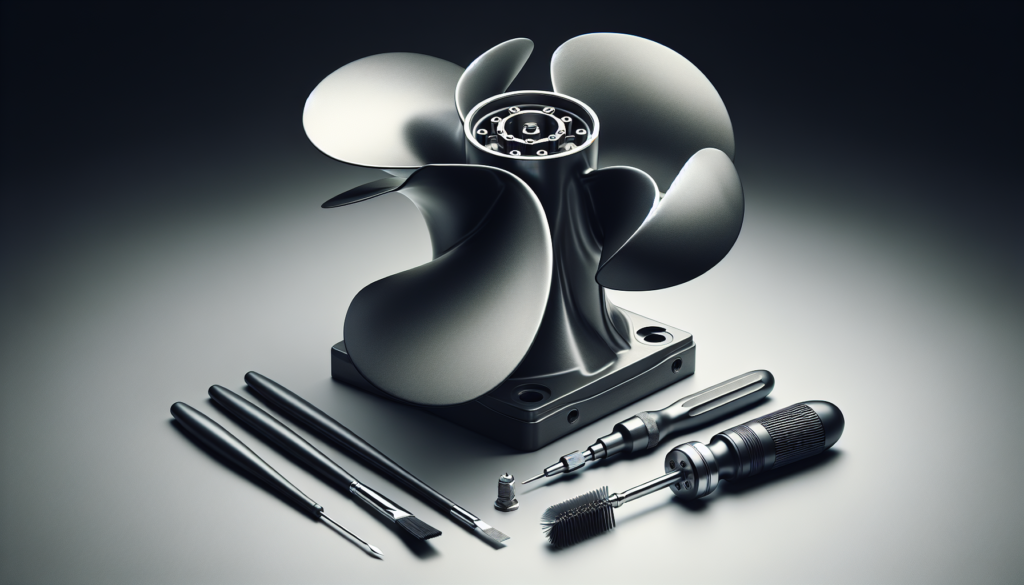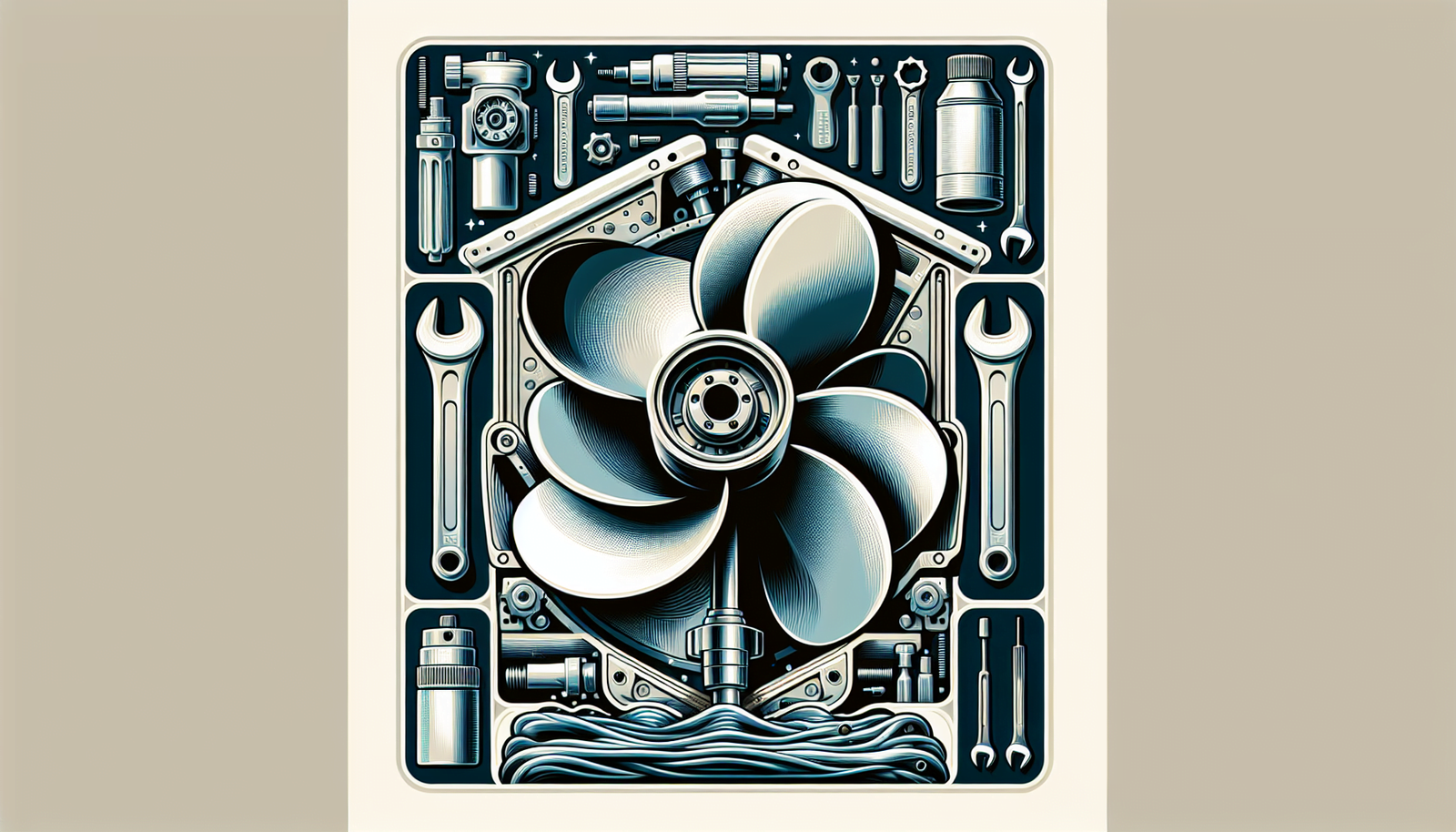If you’re an avid boater, ensuring your boat’s engine propeller is well-maintained is crucial—a poorly kept or damaged propeller can lead to inefficient fuel consumption and waste of your precious time. “Expert Tips For Boat Engine Propeller Maintenance” shares the secrets used by professionals to keep boat propellers in top-notch condition. If you’re looking for a guide on how to properly care for your boat’s most important component, then these expert-led tips are just what you need for optimal boat handling, improved fuel efficiency, and longer propeller life. It’s not just about keeping your vessel moving, it’s about enhancing its performance.
Importance of Regular Propeller Maintenance
Maintaining your boat’s propeller regularly is a crucial part of ensuring optimal boating performance. It’s often overlooked, but it’s as important as checking your boat’s engine. Without routine maintenance, you’ll inevitably encounter issues that could have been avoided.
Ensuring optimal boat performance
An efficiently running propeller ensures that your boat performs at its peak. It ensures smooth sailing, better fuel efficiency, and less strain on your motor. Regular propeller maintenance ensures that your boat is always ready for your next adventure.
Preventing propeller damage
Many potential problems can be avoided with regular propeller maintenance. This includes preventable damage like corrosion, nicks, and dents. These minor issues may seem like cosmetic problems at first, but if left unchecked, they can lead to major, costly repairs down the line.
Avoiding costly repairs and replacements
Regular propeller maintenance can save you from a hefty repair bill in the future. Through routine checks, tune-ups, and minor repairs, you can catch issues early and avoid expensive replacements.
Understanding the Basics of a Propeller
Before you dive into propeller maintenance, it’s essential to understand the basics about this crucial component of your boat.
Fundamentals of a boat propeller
The propeller is responsible for converting the engine’s power into a thrust that propels the boat through the water. It’s a series of blades attached to a hub, which is connected to the engine’s drive shaft.
Role of a propeller in boat operation
The propeller’s role is quite simple: it moves the boat forward. The engine rotates the propeller, and the propeller pushes water backward. This generates a force that moves the boat forward.
Types of boat propellers
There are different types of propellers depending on the type and purpose of the boat. Aluminum and stainless steel propellers are most common for recreational boats. Propellers come in different sizes, shapes, and blade numbers.

Items Needed for Propeller Maintenance
Performing propeller maintenance requires some basic tools and equipment.
Using the proper tools
Among the tools you’ll need is a propeller removal tool, a torque wrench, and safety equipment like gloves and goggles. You may also need a grease gun for lubricating the prop.
Choosing the right cleaning agents
Marine-specific cleaning agents are needed to clean and descale the propeller. These solutions are designed to remove salt, dirt and prevent corrosion.
Special equipment for propeller inspection
Magnifying glasses and bright LED lights can aid in doing detailed inspections. You can spot any minor damages, corrosion, and buildup that your naked eye might have missed.
Routine Inspection of the Propeller
Regular inspection of the propeller is the first step in maintenance.
When to inspect the propeller
Ideally, you should inspect your propeller before and after every trip. It ensures that nothing impedes your journey and helps you identify any damage that might have occurred during your trip.
How to visually inspect a propeller
Look for signs of damage like nicks, dents, or distortions on the blades. Check for corrosion or any loose hardware. Pay special attention to the blade tips and edges where damage is most likely to occur.
Addressing minor damages immediately
If you notice any minor damages during your inspection, it’s best to address them immediately. Doing so helps prevent the problem from escalating, saving you from costly repairs down the line.

Cleaning and De-scaling the Propeller
Cleaning and de-scaling is an integral part of propeller maintenance.
Steps to clean the propeller
Start by loosening and removing the propeller from the shaft. Then use your brush and marine-specific cleaning solution to clean the propeller thoroughly. Always rinse the propeller with fresh water after cleaning.
Choosing the right de-scaling solution
Using the right de-scaling solution is vital to removing persistent marine growth and preventing future buildup. Marine-specific solutions are designed to break down calcium, rust, and other mineral deposits safely and effectively.
Prevention of corrosion and scale buildup
After a thorough cleaning and de-scaling, apply a protective coating to prevent corrosion and scale buildup. It acts as a sealant and prolongs the life of your propeller.
Removing and Replacing the Propeller
Sometimes, removal and replacement of the propeller are necessary.
When to remove the propeller
Remove the propeller for cleaning and when you notice significant damage. Regular removal also allows you to lubricate the shaft properly.
A step by step guide to replacing the propeller
After removing the old propeller, clean the shaft thoroughly using a wire brush and marine grease. To replace a propeller, slide the new prop onto the shaft, secure the washer and tighten the nut using a torque wrench. Always refer to your owner’s manual for detailed instructions and torque specifications for your particular model.
Safety measures while changing the propeller
Always wear safety gloves and goggles when changing the propeller. Keeping the boat stable will also ensure your safety when working on the propeller.
Repairing Minor Damages on Propeller
Small chips and dents can sometimes be easily repaired.
How to address chips and dents
Small chips and dents can be filed down to create a smooth surface. However, this must be done with care to avoid unbalancing the propeller.
When to get professional help
If there’s severe damage or if you’re unsure about the repair process, it’s best to seek professional help. They can assess the extent of the damage and recommend appropriate solutions.
Prolonging the propeller lifespan
Routine maintenance, cleaning, and immediate address of minor damages can significantly prolong the life of your propeller. Always using it within its performance capability also helps to prevent wear and tear.
Balancing the Propeller
Balancing the propeller is a crucial aspect of propeller maintenance.
Importance of a balanced propeller
An unbalanced propeller can lead to vibration, noise, and even physical damage to your boat’s drive system. A balanced propeller runs smoothly, which extends the overall life of your boat’s engine.
Methods to balance the propeller
Balancing the propeller involves removing material from the heavier blades until all blades are of equal weight. It’s a delicate process and is usually handled by professionals.
Signs of an unbalanced propeller
Common signs of an unbalanced propeller include vibration, reduced performance, and irrational noise. If you notice such symptoms, it’s best to have your propeller checked and balanced.
Winterizing the Propeller
Propeller maintenance doesn’t stop during the offseason.
Need for winterization
Winterizing your propeller prepares it for the dormant winter months. It protects the propeller from rust and other damage caused by freezing temperatures and non-use.
Steps to winterize the propeller
Winterizing includes thorough cleaning, drying, and applying a protective coating. Store the prop in a dry area away from temperature fluctuations.
Maintaining the propeller during offseason
Even during the offseason, give your propeller an occasional check for any signs of corrosion or wear.
Maintaining Propeller in Specific Boating Conditions
Depending on where you’re boating, your propeller maintenance routine may vary slightly.
Propeller maintenance in freshwater
Freshwater is generally less harsh on propellers than salt water. Regular cleaning, inspection, and maintenance should suffice for freshwater boating.
Propeller maintenance in saltwater
Saltwater accelerates the corrosion process and encourages marine growth. Hence, if you’re boating in saltwater, it requires more frequent inspection, cleaning, and possible use of anti-fouling paint.
Adjustments for high-speed boating
High-speed boating puts more strain on the propeller. It requires more frequent inspections and possibly more thorough cleaning sessions to ensure optimal performance and prevent overheating.
In conclusion, propeller maintenance, albeit often overlooked, is vital for your boat’s performance, longevity and safety. Being proactive and diligent in your maintenance routine will save you from unforeseen troubles and costly repairs, ultimately giving you peace of mind and the freedom to enjoy your boating experiences.

